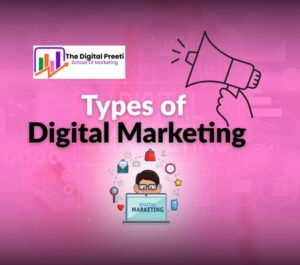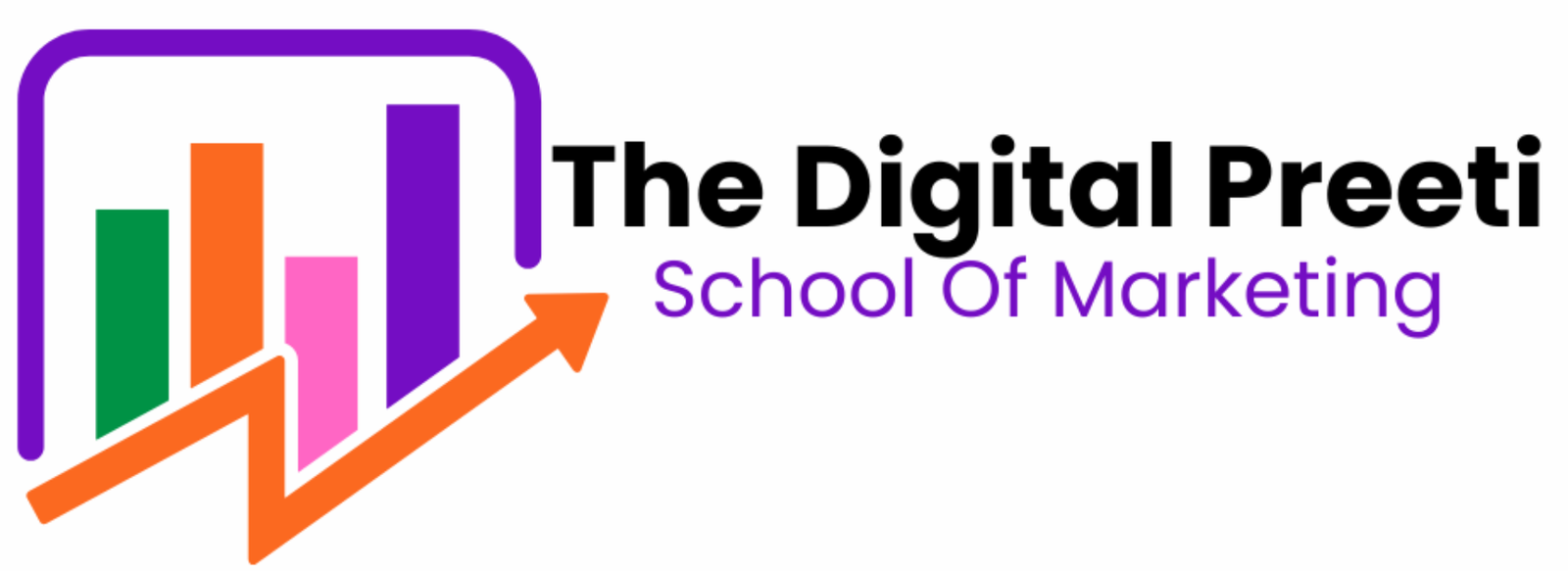What are the Different Types of Digital Marketing?
Digital marketing refers to a large range of strategies businesses use to promote their products as well as services through digital platforms. It allows companies to connect with potential customers online, build relationships, and drive conversions. This guide explains the main types of digital marketing in detail to help readers understand how each can be applied effectively.

What are the different types of digital marketing, and what are they?
1. Search Engine Optimization (SEO)
Search Engine Optimization (SEO) is the practice of improving your website’s or website pages visibility on search engine results pages (SERPs). The goal is to get your site ranked higher organically (without paid ads). It involves both technical and creative elements that influence your website’s performance in search rankings.
Key components of SEO include
- Keyword Research: Discovering the words and phrases people use to search for information related to your business.
- On-Page SEO: Optimizing page titles, meta descriptions, headers, and content for target keywords.
- Off-Page SEO: Building backlinks from reputable websites to enhance authority and trust.
- Technical SEO: Make sure your website loads fast, is mobile-friendly, and is easy for search engines to crawl.
- Local SEO: Targeting location-specific searches to attract nearby customers.
SEO is a long-term strategy, but it is essential for increasing organic traffic and gaining credibility in your industry.
2. Pay-Per-Click Advertising (PPC)
PPC is a type in which advertisers pay each time a user clicks on their ad. These ads typically appear on search engines and social media platforms. It offers instant visibility and traffic but requires careful keyword targeting and budgeting.
Types of PPC campaigns:
- Search Ads: Text ads shown at the top of SERPs when users search specific keywords.
- Display Ads: Visual banners placed on relevant websites.
- Social Media Ads: Ads promoted on platforms like Facebook, Instagram, LinkedIn.
- Retargeting Ads: Shown to users who previously visited your website.
PPC is ideal for driving quick results and targeting specific audiences.
3. Content Marketing
Content marketing is a strategic approach focused on creating valuable and relevant content to attract, educate, and engage your target audience. Rather than directly promoting a brand, content marketing provides useful information that builds trust and loyalty over time.
Common formats include
- Blog posts
- Infographics
- Ebooks & Whitepapers
- Videos & Webinars
- Case Studies
Example: A blog about “Top 10 SEO tools” not only provides value but subtly promotes a service.
Content marketing boosts SEO, strengthens brand authority, and supports lead generation.
4. Social Media Marketing (SMM)
SMM involves using social media platforms to promote your brand, interact with followers, and drive website traffic. It’s effective for building community and brand loyalty.
Popular platforms:
- Facebook & Instagram: Great for visual content, stories, and advertising.
- LinkedIn: Perfect for B2B and professional networking.
- YouTube & TikTok: Ideal for video-based marketing.
- Twitter: Useful for real-time updates and customer engagement.
SMM is important for brand visibility, customer feedback, and reaching highly targeted audiences.
5. Email Marketing
Email marketing is one of the most direct and personal forms of digital communication. It’s used to keep customers informed, build loyalty, and drive conversions.
Effective email campaigns include:
- Welcome emails
- Weekly newsletters
- Promotional offers
- Abandoned cart reminders
- Re-engagement campaigns
Emails can be personalized using customer data, improving open rates and engagement. Automation tools help deliver timely and relevant messages.
6. Affiliate Marketing
Affiliate marketing is a performance-based strategy where partners (affiliates) promote a company’s products and earn commissions for each sale or lead generated through their efforts.
Key aspects:
- Affiliates use custom links to track referrals.
- Businesses benefit from extended reach without upfront costs.
- Common on platforms like blogs, YouTube, and review websites.
Example: A fitness blogger promoting protein supplements and earning commissions per sale.
7. Influencer Marketing
Working with people who have a large following on social media or other online platforms is known as influencer marketing. These influencers promote your brand to their audience in an authentic and relatable way.
Types of influencers:
- Mega Celebrities
- Macro (Large niche influencers)
- Micro (Small but loyal audiences)
- Nano (Community-level influencers)
Choosing the right influencer ensures brand alignment and higher engagement rates.
8. Video Marketing
Video marketing uses video content to promote, educate, or entertain an audience. It’s highly engaging and proven to boost conversions.
Types of videos:
- Tutorials and How-tos
- Product Demos
- Explainers
- Customer Testimonials
- Live Streams
Platforms: YouTube, TikTok, Instagram Reels, Facebook Live.
Example: A SaaS company using animated explainers to describe how its software works.
9. Mobile Marketing
Mobile marketing targets users through smartphones and tablets. As mobile usage continues to grow, this channel is essential for marketers.
Tactics include:
- SMS Campaigns
- App-based Advertising
- Mobile Push Notifications
- Mobile-Optimized Websites
Example: A clothing brand sending flash sale alerts via SMS to its subscribers.
10. Online Reputation Management (ORM)
ORM focuses on monitoring, influencing, and improving a brand’s online perception. A good reputation is crucial for customer trust and conversion.
Key practices:
- Encouraging positive reviews
- Responding to negative feedback
- Publishing case studies and success stories
- Monitoring social media and review platforms
A strong ORM strategy protects your brand and builds long-term credibility.
11. Native Advertising
The goal of native advertising is to fit in perfectly with the platform’s content. It doesn’t disrupt user experience and feels natural to the audience.
Forms include:
- Sponsored Articles
- In-Feed Social Ads
- Recommended Content Widgets
Example: A travel article sponsored by a hotel chain subtly promoting their services.
12. Marketing Automation
Using tools and technologies to automate marketing processes and operations is known as marketing automation. It helps streamline repetitive tasks, improve efficiency, and nurture leads effectively.
Applications include:
- Automated Email Campaigns
- Lead Scoring
- Drip Marketing
- Social Media Scheduling
- CRM Integration
Popular Tools: HubSpot, Mailchimp, ActiveCampaign.
FAQs: What are different types of digital marketing?

-
What are different types of digital marketing, and why is it essential?
It depends on your business goals, but SEO and content marketing often yield long-term value, while PPC offers faster results. A combination usually gives the best outcomes. - Can small businesses afford digital marketing?
Yes. Digital marketing offers scalable solutions like social media, email marketing, and local SEO that are cost-effective and highly targeted for small businesses. - What is the difference between SEO and PPC?
SEO totally gives us organic traffic through optimization, while PPC involves paying for Google Ads. SEO is long-term in a sense, whereas PPC provides quick visibility results on Google SERP but at a cost per click. - How long does it take to see results from digital marketing?
SEO and content strategies may take 3–6 months, whereas PPC and social media ads show results almost immediately. Timeframes depend on goals and strategy. - Is digital marketing suitable for all industries?
Absolutely. Whether it’s retail, healthcare, education, or B2B services—digital marketing can be customized to fit every industry’s audience and objectives.
For knowing exactly what digital marketing is. step-by-step guide read now
